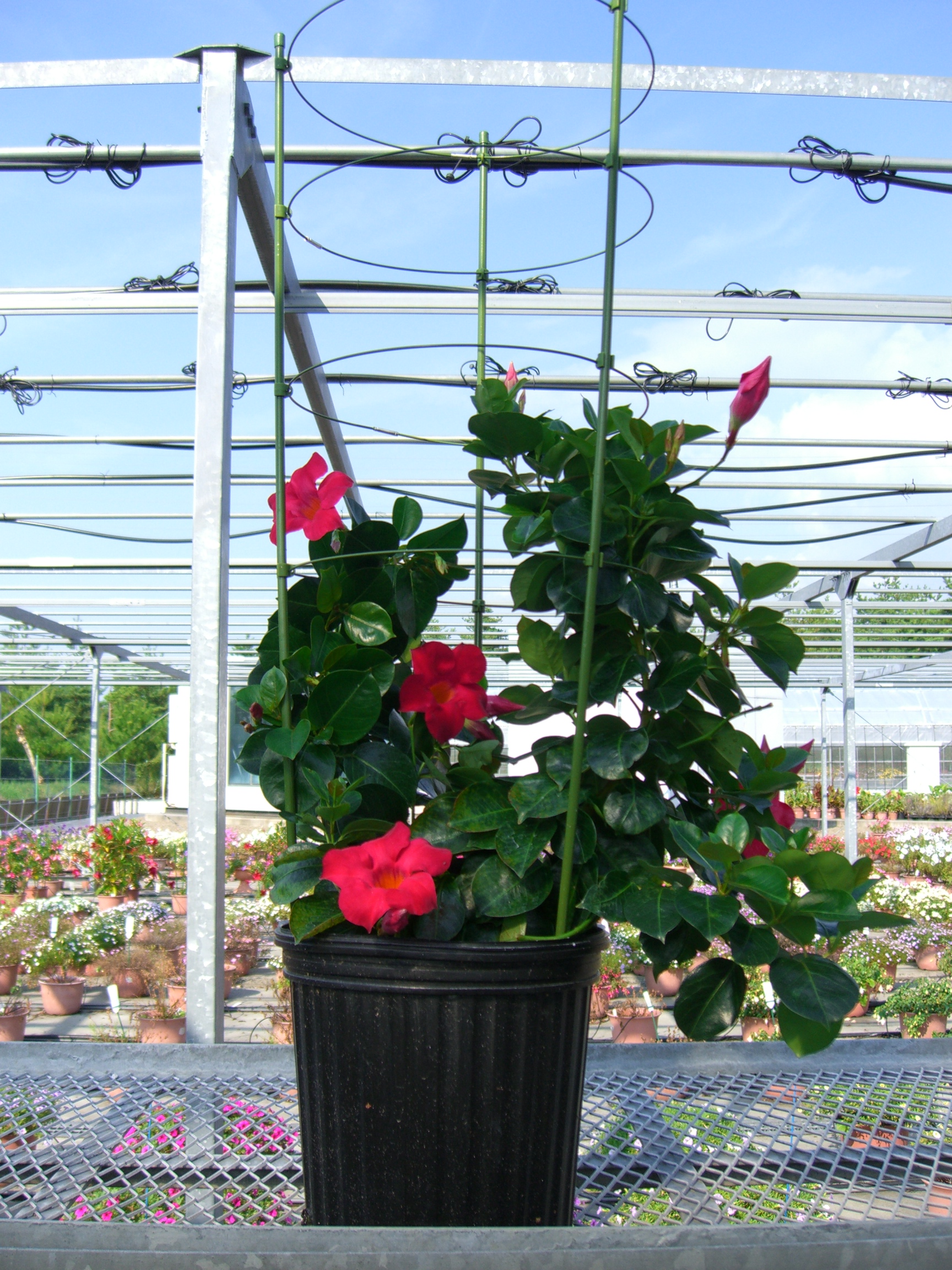Sunparadai
| Denomination: | 'Sunparadai' |
|---|---|
| Botanical Name: | Mandevilla |
| Applicant/Holder: |
Suntory Flowers Limited Administrative Division 4-17-5 Shiba, Minato-ku Tokyo 108-0014 Japan |
| Breeder: |
Theo Ruys, Leimuiderburg, Netherlands |
| Agent in Canada: |
BioFlora Inc. 38723 Fingal Line R.R. #1 St. Thomas, Ontario N5P 3S5 Canada Tel: 519-317-7511 |
| Application Date: | 2009-03-05 |
| Application Number: | 09-6514 |
| Grant of Rights Date: | 2012-02-24 |
| Certificate Number: | 4287 |
| Date rights surrendered: | 2016-01-29 |
Variety Description
Description:
PLANT: twining growth form, medium to tall
STEM: medium green, anthocyanin colouration present, no pubescence
LEAF: decussate arrangement
LEAF BLADE: length approximately 69 mm, width approximately 53 mm, broad obovoid, acuminate apex, medium to dark green on upper side, medium to strong glossiness on upper side, no pubescence on upper side, medium green on lower side, no pubescence on lower side, recurved in longitudinal section, no undulation of margin
PETIOLE: length approximately 20 mm, anthocyanin colouration present, no pubescence
INFLORESCENCE: racemose, flower bud obtrullate
CALYX: five lobes, length approximately 8 mm, light to medium green basal half, light green with red pointed lobes on distal half
COROLLA: diameter approximately 80 mm in cross section, tube funnel shaped
COROLLA TUBE: length approximately 18 mm, very light green with a strong red flush
COROLLA THROAT: length approximately 35 mm, width of distal part approximately 23 mm, light green (RHS 145C) basal half on outer side, dark pink red (RHS 53C) distal half on outer side, red (RHS N34B) basal half on inner side, red (RHS 46B) with red purple flush on distal half of inner side
LIMP: segments asymmetric, acuminate apex, dark purple red (RHS 46A) on upper side, weak undulation of margin, recurved in longitudinal section on distal part
REPRODUCTIVE ORGANS: five stamens, yellow anther, yellow filament, yellow ovary
PEDICEL: length approximately 17 mm, light to medium green, weak anthocyanin colouration, no pubescence
Origin & Breeding History: 'Sunparadai' originated as a naturally occurring branch mutation of 'Sunmadecrim'. The new Mandevilla was discovered in May 2005 in a controlled environment in Amstelveen, The Netherlands. The selected plant was propagated by cuttings and grown in pots. A trial was carried out and the botanical characteristics of that plant were examined. As a result, it was concluded that this Mandevilla plant was distinguishable from any other varieties and it was named 'Sunparadai'.
Tests & Trials: The detailed description of 'Sunparadai' is based on the UPOV report of Technical Examination, application number 2007/1789, purchased from the Community Plant Variety Office, in Angers, France. The trials were conducted by Naktuinbouw in Roelofarendsveen, The Netherlands in 2009. Colour determinations were made using the Royal Horticultural Society (RHS) Colour Chart.
Click on image for larger view

Mandevilla: 'Sunparadai'
- Date modified: